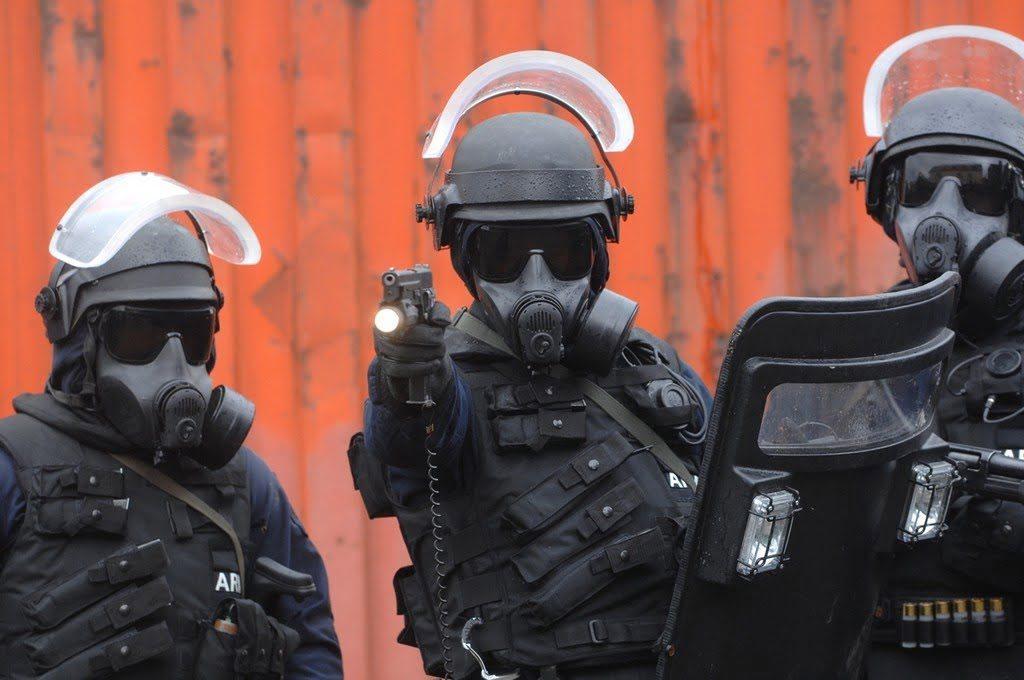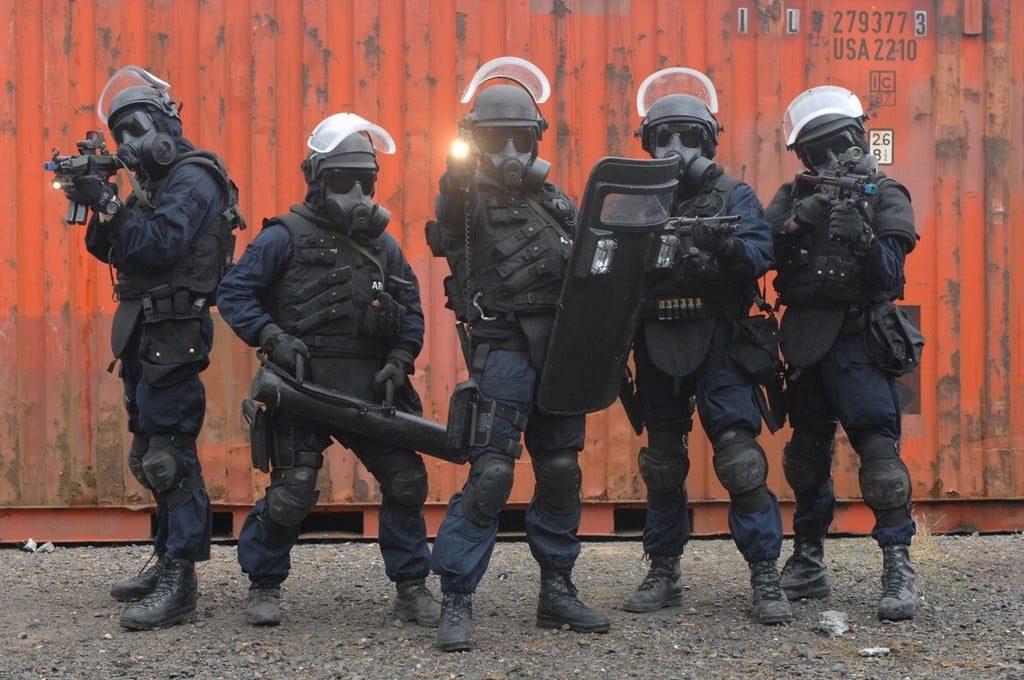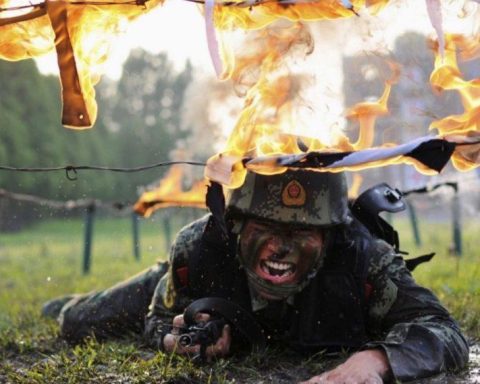Irish Army Ranger Wing (ARW) is the special unit in the Irish Defence Forces. The Army Ranger Wing (ARW) is Ireland’s hostage rescue unit and they are closely related to the specialized Irish Emergency Response Unit (ERU). Sciathán Fiannóglach an Airm (Irish: Army Ranger Wing) and An Garda Síochána (Emergency Response Unit) are training together and in any hostage situation, the Irish Army Ranger Wing (ARW) could be requested to support the ERU.
The Army Ranger Wing trains and operates as many international special operations units worldwide. Their training is often concluded in cooperation with the US Army Rangers, French GIGN, German GSG 9, Polish GROM, Swedish SOG, Italian COMSUBIN, Australian SASR, New Zealand NZSAS, and Canadian JTF2 among others.
Mission
The Irish Army Ranger Wing (ARW) has a wide variety of roles, covering conventional warfare, anti-terrorist warfare, and training for the Defence Forces including:
- Offensive operations behind enemy lines, e.g. securing of vital objectives, long-range patrolling, raids, ambushes, sabotage, the capture of HVTs, diversionary operations, delay operations, intelligence gathering.
- Defensive operations, e.g. VIP protection, counter-insurgency.
- Specialist aid to the civil power (anti-terrorist tasks), anti-hijacking operations, bus, plane, train, ferry hostage rescue operations.
- Standards, e.g. testing and evaluation of military equipment, conducting specialist courses.
- Returning highly skilled personnel to the Defence Forces on completion of service in the ARW.
History
Let’s go to the very beginning, in the late 1960s and early 1970s, when a small number of Irish Defence Forces personnel attended the United States Army Ranger School at Fort Benning, Georgia. After they successfully completed courses at Ft. Benning, these personnel organized similar courses. The first course was attended by 12 students and it was conducted in the Military College in the Curragh Army Camp in 1969. Students on these courses were selected from among all ranks and units of the Irish Army, Air Corps, and the Naval Service. The students had tests in physical endurance, marksmanship, individual military skills, and small unit tactics.

Formalizing these standards and the creation of the Irish Army Ranger Wing resulted from the increase in international terrorism in the late 1970s and 1980s. The increased skills and endurance training of new personnel trained by the Ranger program provided the basis for the creation of a new specialist unit. The new unit, formed to counter threats from international terrorism was named the IrishvArmy Ranger Wing (ARW) and the unit was formally established, in accordance with the Defence Act, by Government order on 16 March 1980. Their first official mission was to be deployed into Somalia, providing protection for convoys.
Training and selection
Selection
Selection for the Irish Army Ranger Wing (ARW) takes place annually, and it lasts for 4 weeks, usually in October. The selection process takes two phases: 3 weeks of the regular selection process and one week for the psychological evaluation of the candidate. If the candidate met minimum requirements it will be sent to the basic 6-month training. The candidates for selection must be serving members of Irish Defence Forces, and, of course, to be volunteers. They are not subject to an age limit. Selection is open for three branches of the Irish military, and also, the selection is open for female soldiers, although none has ever passed the initial selection course.

In the first phase, instructors demonstrate the basic requirements to become a Ranger and candidates must pass a number of initial physical tests – including water confidence training, assault course training, individual navigation tests as well as a 10 km combat run test. If a candidate fails more than 3 out of the 9 basic tests they are returned to their home unit. A selection course may only be attempted three times by any candidate.
In the second phase, candidates are taught special forces tactics such as long-range reconnaissance patrolling (LRRP), surveillance, intelligence gathering, search tactics, and ambush organization. The course culminates in a 45 km group march which must be completed in a set time.
In all, candidates must complete an assessment in the following areas:
- Abseiling – Assesses a student’s confidence when working at height.
- Bridge jump – Tests confidence in the water.
- River crossing – Evaluates the ability to work in a team.
- Claustrophobia – Tests a student’s ability to work with their equipment in confined spaces.
- Gym tests – Assesses muscular endurance and strength while performing a set number of exercises.
- 10 km run – under 50mins Tests cardiovascular endurance over a set distance and time.
- Mountain walk – Tests endurance over a set uphill march, while carrying a medium load.
- Hill circuit – Assesses stamina and strength over a set cross-country course, while carrying a light load.
- Forced march “cross-country” – Assesses stamina and strength over a set cross-country course and time while carrying a medium load of around 20 kg. distance is 25km to finish under (6 hrs 30mins)
- Forced march “road” – A group test to assess the student’s tolerance of pressure over a set course and time, while carrying a medium load, the distance is between 35–40 km. ( march speed is 4km/hr )
- Route march – A group test to assess overall stamina, endurance, and strength during a forced march over the mountains while carrying a medium load.
Training
If a candidate passes selection at this stage, they are sent on a further six-month ranger skills course. This course includes long-range reconnaissance and survival training, unarmed combat, counter-terrorism, close protection, advanced driving, combat diving, boat handling, sniping, explosive intervention, advanced navigation, and close-quarters combat skills, advanced first aid, advanced combat shooting, and parachuting. Upon passing this selection course and the probationary period they then earn the right to wear the prestigious Green beret. Some parts of the combat diving training course are done under the supervision of the Naval Service’s Naval Service Diving Section.
The Irish Army Ranger Wing also has its own purpose-built tactical training facility. Their tactical training facility includes shoot houses with various scenarios, training ranges, and various urban settings. The facility is known as TAC TOWN.
Washout rate
Of the 40 to 80 candidates that start the annual Ranger selection course, only 15% remain at the conclusion. All candidates who successfully complete the Ranger course are presented with the Fianóglach shoulder flash.
Operations
The Irish Army Ranger Wing (ARW) operators are regular members of peacekeeping missions around the world with the UN and EU and PfP. They have already conducted missions in Liberia, East Timor, and Chad. For sure, the Irish Army Ranger Wing (ARW) is a truly professional unit and capable of finishing every objective assigned.
US Army International Sniper Competition
An Irish Army Ranger Wing (ARW) with the Irish Defence Forces made history after they became the first non-USA team to win the US Army International Sniper Competition in 2015. The Army Ranger Wing won the overall and international categories in the United States Sniper Competition in Fort Benning, Georgia. They’re now considered as one of the best sniper teams in the world after winning the prestigious event.
Needless to say, the American media were very impressed, if seemingly surprised, that the Irish Army Ranger Wing (ARW) has come out on top of the pile beating the likes of the US Army Rangers, Airborne, Marine corps and the FBI HRT team.
Motto
The Unit motto is taken from an old Fianna poem and continues the link with which the name is associated. It is written in the Irish language:
Glaine ár gCroí, Neart ár nGéag, Agus beart de réir ár mbriathar
The cleanliness of our hearts, The strength of our limbs, And our commitment to our promise





